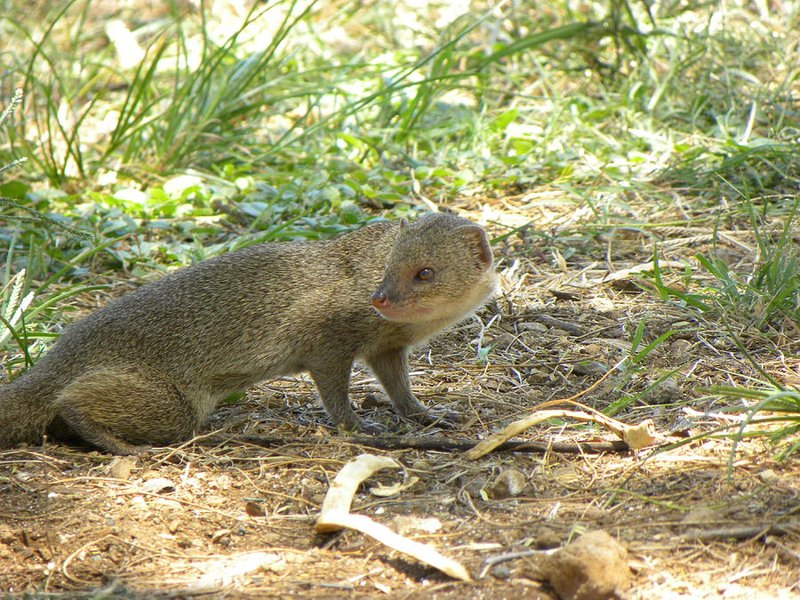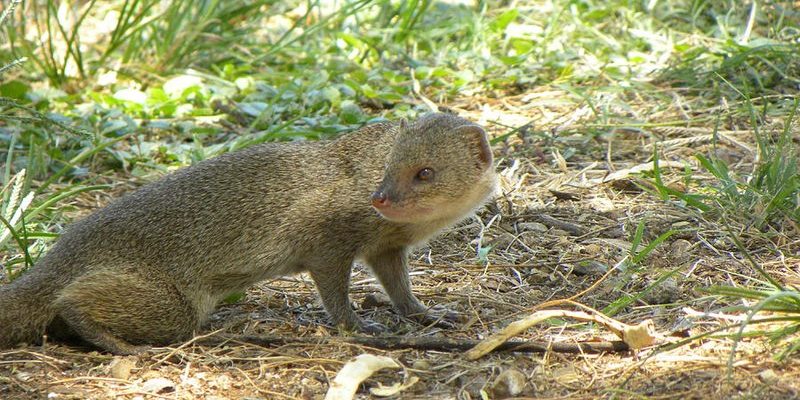
The mongoose is a small, agile mammal known for its remarkable ability to combat snakes and other predators. When you think of mongooses, picture a furry critter darting through the grass, with a spirit that seems to say, “Bring it on!” These creatures have a fascinating reputation for bravery, often taking on venomous snakes like cobras. But there’s so much more to these incredible animals than just their fearless nature.
Mongooeses belong to the family Herpestidae, which includes around 34 species. They typically inhabit parts of Africa, Asia, and even some Mediterranean islands. With their sleek bodies and quick reflexes, mongooses are well-adapted to their environments. You might find them in various habitats, from savannas to forests, always on the lookout for their next meal or a potential threat.
In this article, we’ll explore everything from their behavior and diet to their unique social structures. Whether you’re a wildlife enthusiast or simply curious about these fascinating creatures, you’re in for a treat. So, let’s dive into the wonderful world of mongooses!
Physical Characteristics of Mongooses
Mongooeses are relatively small animals, with most species measuring between 10 to 30 inches in length, not including their tails. The tail itself can be nearly as long as their body, providing balance as they dart around their territory. Their fur varies in color but is often a combination of brown or gray, which helps them blend into their surroundings. This camouflage is vital for evading predators and sneaking up on prey.
Mongooses have sharp claws and strong legs that allow them to dig and climb, which is especially useful when searching for food or escaping danger. Their eyesight is sharp, aiding them in spotting potential threats from a distance. Interestingly, their ears are somewhat rounded and always perked up, so they can detect even the slightest rustle in the grass—perfect for hunting and avoiding danger.
Another notable feature is their keen sense of smell. Mongooses rely heavily on their olfactory senses to locate prey, such as insects, small mammals, and, yes, even snakes. This combination of physical traits makes them efficient hunters and survivors in the wild.
Habitat and Distribution
You can find mongooses in diverse environments around the world. They thrive in tropical forests, grasslands, savannas, and even urban areas. Wondering where you might spot one? The African savannah is a popular locale, but some species, like the Indian mongoose, can be found in parts of Asia and beyond.
Mongooses prefer habitats where they can burrow or find shelter easily. They often create their homes in abandoned burrows or dig their own, providing them with a safe place to rest and raise their young. Many mongooses also form social groups, which helps them cooperate in finding food and defending against predators.
Climate plays a crucial role in the distribution of mongooses. They generally prefer warmer regions, as cold weather can be challenging for these small mammals. Nevertheless, their adaptability means that some species have established populations in areas where you might not expect to see them, including urban settings where food sources are abundant.
Diet and Feeding Habits
Mongooeses are omnivorous creatures, which means they eat a wide variety of foods. Their diet typically includes insects, small rodents, birds, and even fruits and vegetables. This diverse eating habit allows them to adapt to different environments and ensures they can find something to eat no matter where they are.
One of the best-known aspects of mongoose behavior is their ability to take on snakes. Yes, these little creatures are not just fearless; they are skilled hunters. They use quick reflexes to dodge strikes and can kill snakes by biting their heads and delivering a swift, fatal blow. This unique feeding habit is a direct result of their evolutionary adaptations, making them experts at dealing with snake venom.
When foraging for food, mongooses are often seen working in teams, which improves their chances of finding dinner while also keeping them safe from predators. They communicate with each other through various vocalizations, helping them coordinate their efforts while hunting. This teamwork not only enhances their survival but also strengthens social bonds within their groups.
Behavior and Social Structure
Mongooeses are fascinating creatures in terms of their social behavior. Depending on the species, they can be solitary or highly social animals. Some species live in groups, known as mobs or gangs, that can range from a handful of individuals to over 30. In these social groups, you’ll find a strong sense of teamwork and communication.
Within these groups, mongooses establish a hierarchy. Dominant individuals often have priority access to food and mates, while subordinate members have specific roles, such as babysitters for the young. This social structure is crucial for survival, especially when it comes to raising young. The more eyes there are watching for predators, the safer the group remains.
Mongooses are also known for their playful nature. When they’re not hunting or keeping an eye out for danger, they engage in social play, which includes chasing each other or rolling around. This play is essential for young mongooses, as it helps them develop the skills they need for survival as adults.
Reproduction and Lifespan
The reproductive habits of mongooses vary by species, but most exhibit a breeding season that is influenced by environmental conditions. Female mongooses are known to go into estrus, or heat, typically once or twice a year, depending on factors like food availability and climate. During this time, males will compete for the chance to mate.
Once pregnant, female mongooses usually give birth to a litter of 2 to 6 young after a gestation period of about 60 to 70 days. The young, known as kits, are born blind and helpless, relying entirely on their mother for food and protection during the early stages of life. As they grow, kits begin to explore their surroundings and learn essential survival skills from their parents.
In terms of lifespan, mongooses generally live up to 6 to 10 years in the wild. However, some individuals can live longer in captivity due to fewer threats from predators and access to consistent food and care. Understanding their reproductive cycle and lifespan gives us insight into how these creatures maintain their populations in the wild.
Conservation Status
Mongooeses face various threats in the wild, primarily due to habitat loss and hunting. Many species are affected by deforestation and urbanization, which reduce their natural habitats. Additionally, because mongooses can be seen as a nuisance in agricultural areas, some farmers may hunt them to protect their crops.
While some species of mongoose are common and widespread, others are listed as endangered. Conservation efforts are underway in several regions to protect their habitats and reduce human-wildlife conflict. These efforts include creating protected areas, raising awareness about the ecological importance of mongooses, and promoting coexistence strategies with local communities.
Being part of the ecosystem, mongooses help control rodent and insect populations, contributing to a balanced environment. Protecting them is crucial for maintaining biodiversity, so understanding their role and the threats they face is essential for effective conservation efforts.
Interesting Facts About Mongooses
Mongooeses are full of surprises! Here are some interesting tidbits that you might not know:
- Some species of mongooses can run up to 30 miles per hour when escaping predators.
- Mongooeses have a unique immune system that makes them resistant to certain snake venoms.
- They communicate through a variety of sounds, including growls, whines, and even chirps.
- Saw-scaled vipers and other snakes have been recorded as prey for mongooses!
Evidently, mongooses are not just fascinating to observe; they also play important roles in their ecosystems. They are remarkable, resilient creatures that have adapted to a variety of environments, making them a true testament to nature’s ingenuity.
FAQ
What is a mongoose’s main predator?
Mongooeses are small and agile, but they still have their share of predators. Birds of prey, such as hawks and eagles, often hunt them from above. Larger mammals like foxes and snakes can pose threats as well. However, mongooses are adept at avoiding dangers thanks to their quick reflexes and keen senses, often using their speed and agility to escape.
Can mongooses be kept as pets?
While it may be tempting to have a mongoose as a pet due to their playful and curious nature, it is essential to consider their wild instincts. Mongooses require plenty of space to roam and explore, as well as a diet tailored to their specific needs. Additionally, in many areas, owning a mongoose as a pet may be illegal or require a special permit. It’s generally best to admire these creatures in their natural habitats.
How do mongooses communicate with each other?
Mongooeses use a range of vocalizations to communicate, including growls, barks, chirps, and whines. Each sound can convey different emotions, such as alerting others to a potential threat or signaling curiosity. They also use body language and scent markings to establish territory or display social status within their groups.
What role do mongooses play in their ecosystem?
Mongooeses play a vital role in controlling insect and rodent populations in their habitats. By preying on these animals, they help maintain a balance within the ecosystem, preventing overpopulation. Additionally, their interactions with other wildlife contribute to the overall health of their environments, showcasing the interconnectedness of all species.
Are all types of mongooses dangerous to humans?
Overall, mongooses typically shy away from humans and are not considered dangerous. They prefer to avoid confrontation and will often flee if approached. However, it’s essential to remember that they are wild animals, and any animal can behave unpredictably if it feels threatened. Respecting their space is crucial for both their safety and yours.
Do mongooses live in groups or solo?
Mongooses exhibit a range of social structures depending on the species. While some mongooses are solitary, many live in social groups called mobs. These groups provide safety in numbers, making it easier to hunt and defend against predators. Group living also fosters strong bonds among individuals as they work together to raise young and find food.
How do mongooses hunt for food?
Mongooeses are opportunistic feeders, meaning they will take advantage of whatever food sources are available. They employ various hunting techniques, including ambush tactics. When hunting snakes, mongooses rely on their agility and reflexes to dodge strikes while delivering quick, lethal bites. Their keen senses of sight and smell help them locate prey effectively.
What is the lifespan of a mongoose in the wild?
The lifespan of a mongoose varies by species but generally ranges from 6 to 10 years in the wild. Factors such as predation, habitat conditions, and food availability can significantly influence their longevity. In captivity, where threats are minimized, mongooses may live longer due to consistent care and a stable environment.
Why are mongooses considered beneficial to agriculture?
Mongooeses help control pest populations, including rodents and insects that can harm crops. By preying on these pests, they can play a significant role in maintaining the health of agricultural environments. However, they can sometimes be perceived as nuisances themselves, leading to conflicts with farmers. Therefore, finding a balance is crucial.
Can mongooses be found in urban areas?
Yes, mongooses have adapted to live in urban environments. They can often be seen scavenging for food scraps or exploring gardens. Urbanization may provide them with additional food sources, but it also comes with challenges, such as traffic and human interactions. Their adaptability has allowed some species to thrive in city settings.

